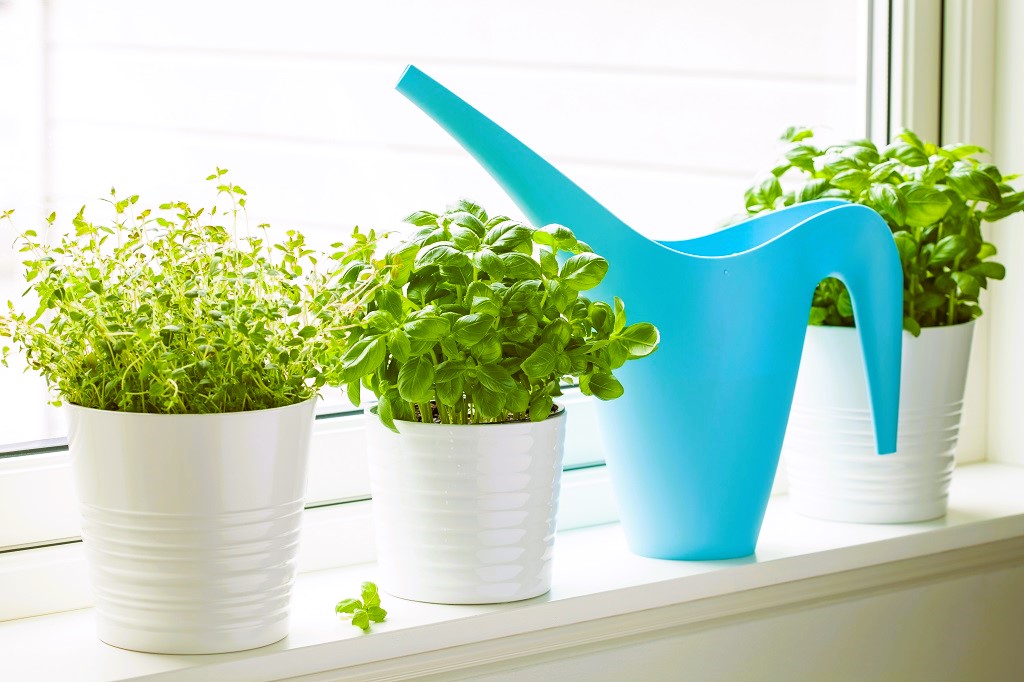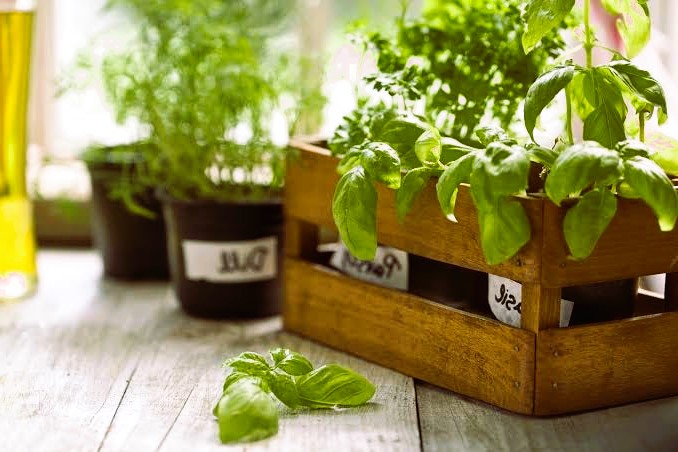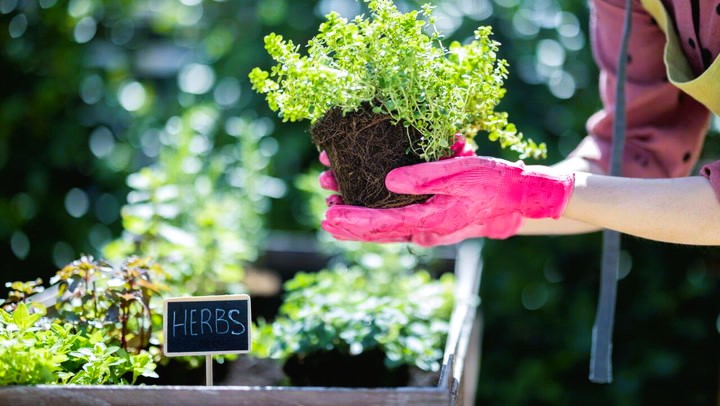As the appreciation for fresh, homegrown ingredients continues to rise, indoor herb gardens have become a popular and rewarding pursuit for culinary enthusiasts. Cultivating herbs indoors not only brings a burst of greenery to your living space but also provides an accessible and sustainable source of flavor for your culinary creations. In this article, we’ll delve into the world of indoor herb gardens, exploring the benefits, essential tips, and creative approaches to infusing your kitchen with the vibrant goodness of homegrown herbs.
The Benefits of Indoor Herb Gardens
- Year-Round Freshness: Unlike outdoor gardens that are subject to seasonal changes, indoor herb gardens offer the advantage of year-round cultivation. Regardless of the weather outside, you can enjoy fresh herbs whenever your recipes call for them.
- Convenience at Your Fingertips: Having herbs growing indoors means you can conveniently snip a few leaves or sprigs whenever you need them. No need for trips to the grocery store – your kitchen garden is just a few steps away.
- Enhanced Flavors: Freshly harvested herbs pack a punch of flavor that can elevate your culinary creations. The immediacy of using herbs straight from the plant ensures optimal taste and aroma.
- Aesthetic Appeal: Indoor herb gardens contribute to the aesthetic appeal of your home. Whether displayed on windowsills, countertops, or hanging planters, herbs add a touch of greenery that complements your interior decor.
- Sustainable Living: Growing herbs indoors aligns with sustainable living practices. By cultivating your own herbs, you reduce reliance on store-bought, packaged herbs, minimizing plastic waste and lowering your carbon footprint.
Essential Herbs for Indoor Gardens

While a variety of herbs can thrive indoors, some are particularly well-suited to the controlled environment of your home. Consider including these essential herbs in your indoor garden:
- Basil: Known for its vibrant flavor, basil is a versatile herb used in a variety of dishes, from pasta sauces to salads. Choose varieties like Genovese or Thai basil for your indoor garden.
- Mint: With its refreshing and aromatic leaves, mint is perfect for teas, cocktails, and desserts. Peppermint and spearmint are popular varieties for indoor cultivation.
- Rosemary: This fragrant herb adds a savory note to roasted meats, potatoes, and bread. Rosemary thrives in well-drained soil and plenty of sunlight.
- Thyme: A versatile herb with a subtle earthy flavor, thyme pairs well with a range of dishes. Varieties like English thyme or lemon thyme are well-suited for indoor growing.
- Chives: With a mild onion flavor, chives are excellent for garnishing salads, soups, and baked potatoes. They are easy to grow indoors and require minimal maintenance. Read about ways to decorate with natural elements in our article.
- Parsley: Both curly and flat-leaf parsley are popular choices for indoor gardens. Use parsley to add freshness to salads, sauces, and as a garnish.
- Cilantro: An essential herb in many cuisines, cilantro adds a burst of citrusy flavor. Ensure a steady supply by growing cilantro indoors, especially if you enjoy dishes like salsa and guacamole.
Tips for Successful Indoor Herb Gardens
- Lighting: Herbs thrive in bright, indirect sunlight. Choose a location with ample natural light, such as a south or west-facing windowsill. If natural light is limited, consider supplementing with fluorescent or LED grow lights.
- Containers: Use well-draining containers with drainage holes to prevent waterlogged soil. Terra cotta pots are a popular choice, as they allow for air circulation and help regulate soil moisture.
- Soil: Select a high-quality potting mix that provides good aeration and drainage. Avoid using garden soil, as it can become compacted in containers and hinder root growth.
- Watering: Herbs prefer slightly moist but well-drained soil. Water your herbs when the top inch of soil feels dry to the touch. Be cautious not to overwater, as this can lead to root rot.
- Temperature and Humidity: Most herbs prefer temperatures between 60-75°F (15-24°C). Keep in mind that indoor environments can be drier, so consider placing a tray of water near your herbs to increase humidity.
- Pruning: Regularly prune your herbs to encourage bushy growth and prevent them from becoming leggy. Use clean, sharp scissors or pruning shears to snip the leaves or stems.
- Fertilizing: Feed your herbs with a balanced, water-soluble fertilizer every 4-6 weeks during the growing season. Follow the package instructions for the appropriate dilution.
- Pest Control: Keep an eye out for pests such as aphids or spider mites. Insecticidal soap or neem oil can be effective for controlling pests in a gentle, organic manner.
Creative Indoor Herb Garden Ideas

- Hanging Herb Planters: Save counter space by hanging your herb garden in stylish planters near windows or from the ceiling. This not only adds a decorative element but also ensures optimal sunlight exposure.
- Vertical Herb Gardens: Utilize vertical space with wall-mounted herb gardens. Install shelves or use wall-mounted pockets to grow herbs like a living wall of greenery.
- Windowsill Gardens: Transform your windowsills into mini herb gardens. Arrange pots in a row or group them in decorative trays for a charming display.
- Repurposed Containers: Get creative with container choices by using items like vintage teacups, mason jars, or tin cans as herb planters. This adds a touch of whimsy to your indoor garden.
- Herb Garden Cart: Create a mobile herb garden by repurposing a bar cart or small trolley. Move it around to catch the best sunlight throughout the day.
- Terrarium Herb Garden: Build a small terrarium with a glass container or cloche for a visually striking indoor herb garden. This also helps create a microclimate for humidity-loving herbs.
- Herb Spiral: If space allows, consider building a herb spiral – a multi-level garden bed that provides varying microclimates for different herbs based on their sunlight and water requirements.
Cultivating an indoor herb garden is a delightful and practical way to enhance your culinary adventures while bringing the freshness of the outdoors into your home. With a bit of care, creativity, and the right herbs, you can enjoy a continuous supply of homegrown flavors, all within arm’s reach.
For more in-depth information on indoor herb gardening standards and practices, you can explore reputable sources such as Canada.ca. These sources provide valuable insights into the world of herb cultivation, sustainable gardening practices, and the benefits of incorporating fresh herbs into your daily culinary routine.


